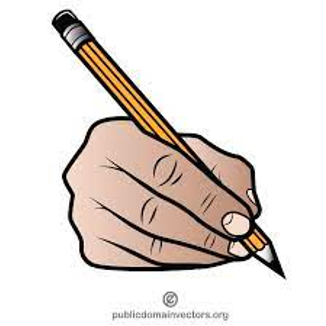Related Products
For Professionals
- Amplification
- Assessment of Student Skills, Challenges, Needs
- Early Childhood: Infants, Toddlers, Preschool
- Hearing Loss – Identification, Impact and Next Steps
- IDEA Law Summary Information
- Language and Speech Development Issues
- Legal Issues in Serving Children with Hearing Loss
- Listening (Auditory Skills) Development
- Planning to Meet Student Needs
- Self-Advocacy Skills for Students with Hearing Loss
- Self-Concept: How the Child with Hearing Loss Sees Himself
- Social Skills
- Speech Perception & Learning
Related Teacher Tools Takeout Items
We Can’t Teach Reading and Writing in Silos

Developing written language is a skill that requires a strong language base. Like literacy-based skills, language and vocabulary are necessary for developing written language. Students who are deaf and hard of hearing will require explicit instruction in reading and writing. These two skills don’t progress independently of one another, but rather in a synchronous manner. We know from research that there are five major components to literacy skill development. Phonological awareness, alphabetic principles, vocabulary, fluency and comprehension are all intertwined to formulate a strong foundation for literacy. As such, written language is based on a student’s language development. Commonly, students with hearing loss will make the same errors in writing as they do in expressive language. This is why it’s important to teach these skills simultaneously. Typically, limited vocabulary, errors in syntax and semantics, and spelling errors make writing difficult for students with hearing loss.
| We can’t teach reading and writing in siloes, they need to be developed simultaneously. |
Listening to spoken language helps children determine proper semantics, syntax, and grammatical features of language. This carries over into their writing, as they tend to write the way they have learned to communicate. For students with hearing loss, the natural progression of skill development based on auditory features in language development, isn’t naturally acquired. It has to be explicitly taught. Teaching children about subject-verb agreement, spelling, sounding out words, semantics and syntax of written language all need to be explicitly taught. Students with hearing loss may make mistakes such as omitting possessives, omitting articles (a, an, the), run on sentences, repetitive use of vocabulary, punctuation errors and limited use of vocabulary. In order to help students develop their written expression skills teachers and speech pathologists can use a variety of techniques to help their students with hearing loss. Use of graphic organizers, teaching mechanics of writing, syntax of writing, parts of speech, sentence organization, rearranging words in a sentence to make the sentence more succinct, and expanding vocabulary are all ways to help students develop written language.
Kristin DiPerri developed a course for Supporting Success addressing written language. She states that students with hearing loss need to learn how to write through a sequence of instruction that is linguistically, conceptually, and developmentally appropriate for their needs. Unlike hearing children, some students with hearing loss do not have a first-grade language fully established PRIOR to Kindergarten. Therefore, we have to teach language while we are teaching writing skills. There must be a system or organized logical progression of instruction. Providing opportunities for students to write independently is recommended in order to help students gauge progress in written expression. It also helps teachers identify errors that need to be addressed in explicit targeted instruction.
Author: Michelle Andros, MSEd
Click here to download this article.
